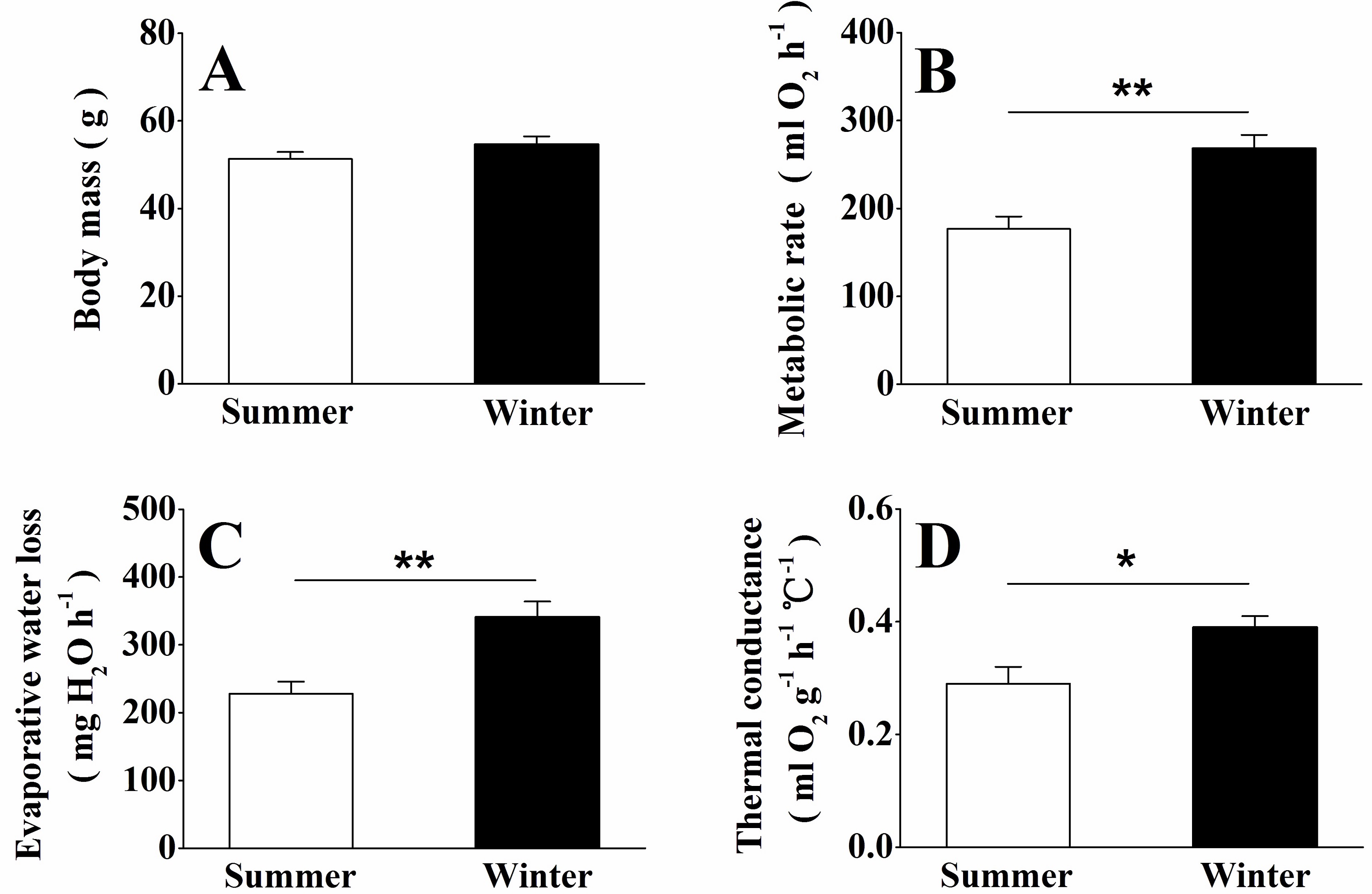Seasonal Thermoregulation in Small Birds
Fluctuating environments necessitate adjustments in
physiology, behavior and morphology in small birds. Adjustments of
thermoregulatory mechanisms presumably promote the survival of birds
subjected to seasonal changes in their natural environment, including
temperature, photoperiod, and food quality and availability. Phenotypic
flexibility refers to phenotypic changes that are reversible,
temporary, and repeatable. Resident birds of temperate climates provide
a natural experiment in phenotypic flexibility, and in these birds
winter increments of thermogenic capacity and cold tolerance are often
associated with changes in exercise or nutritional organ masses and
cellular aerobic capacity. The hwamei (Garrulax canorus)
is a small, nonmigratory passerine found primarily in central and
southern China and northern Indochina. In this study, we used an
integrative approach to investigate whether seasonal phenotypic
variation is associated with physiological, or biochemical differences
in the hwamei. In the final, from the perspective of energy, we clarify
the metabolism and adaptive strategy in hwamei, and provide a
scientific basis for Timaliidae which adapt to different environments.



Read the full article, published by Zoological
Studies, here
Follow Zoological Studies on
Twitter @ZooStudies
and Facebook
